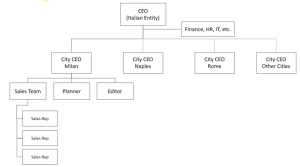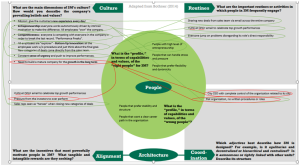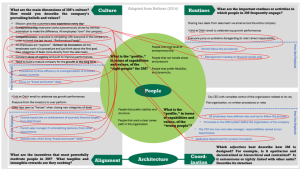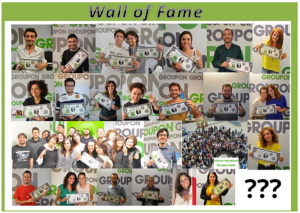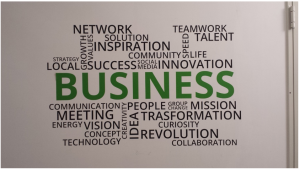This case was written as Organizational Behavior study by Simone Viganò. It is intended to use as the basis for internal discussion and unauthorized reproduction is prohibited.
The company
Groupon, Inc. is one of the worldwide leading online commerce marketplaces for searching businesses and merchandise around the world. Its operations span over three main line of business: Local (services offered by merchants in the cities), Travel (hotels and vacation packages), and Goods (merchandising). It is headquartered in Chicago, Illinois and employed around 11,843 people as of December 31, 2014.
The business model of Groupon is simple: every day, per each city in which it operates, a new special deal is sent to the subscribers. Subscribers can then buy the deals on the website (see exhibit 1) for a limited period of time. These deals are sourced by a sales team which contacts local merchants (e.g. restaurant, saloon, spas, etc.) and negotiate the best offer.
Groupon’s mission is to give its customers a new experience every day, while helping merchants to grow their business.
A startup which lost its soul too soon
Groupon was born in Chicago, then it was expanded as a franchise backed by Rocket Internet in 48 countries outside US and then listed at Nasdaq in November 2011: it was an energetic and fast growing start up. The entrepreneurial culture was the first driver that moved people at work: every employee was working with the idea to revolutionize the world. At that time, in Southern Europe as well as in many countries outside the US, Groupon was the first company which educated Italian, Spanish, Greek and Portuguese people to spend money on internet while Amazon, Expedia and Booking were almost non-existing in this countries.
Every city in which Groupon was present, constituted an almost independent micro-organization (exhibit 2), in which the area manager was appointed as “City CEO” and could decide autonomously over any aspect of the business. Sales reps were encouraged to find new deals exploring all categories of merchants: the introduction of a new category was celebrated as a great success and usually managers sent email to the entire company with the link to the new deal online. If successful, the deal was pushed through all the sales teams around the world, and the sales rep who discover the new category became a “hero” in the company for one day.
The second most important driver was competition. On the walls of the offices there were screens showing productivity and sales, as well as monitors showing other offices at work. Every day the company was celebrating a new record and all the managers were pushed to break it the next day (see also exhibit 5). Rocket Internet investors were constantly putting pressure and sense of urgency on managers asking for continuous double digit growth week over week, no bar was set – “the sky is the limit”. Managers who were achieving top sales growth were instantly glorified across the company with “urbi et orbi” emails.
Despite the high level of stress, everybody was committed to over-perform. Employees who couldn’t handle the stress left the company: it was a natural selection of people with passion for the company, strong entrepreneurial attitude and “performance freaks”. People were working long hours and there was almost no written procedure, what really mattered was the final result. Whoever had an idea to improve sales, was allowed to implement it. In case of problem, whoever was available was jumping on it to solve it as soon as possible. Intrinsic motivation of everyone was big: some employee accepted a salary decrease to join the company, willing to enter in an organization in which innovation, entrepreneurship and competition were core values (see also exhibit 6).
At the same time, management believed that this couldn’t have been sustainable in the long term – the company was growing very fast and the market was quickly reaching maturity – and they were expecting an intervention from the headquarter in Chicago to consolidate the company.
One Playbook and the unification of processes (2013)
In May 2010 all the national entities launched by Rocket Internet were unified under the Groupon brand, but the real unification started later, in 2013, when a global project called One Playbook was launched. Until then, each national entity was operating as an independent company, with different product strategies, organizations and processes. The aim of One Playbook was to apply the same organization, processes and roles across the countries. The core of the project was the implementation of a CRM platform (salesforce.com) in which all processes were mapped and each role had a different profile and limited capabilities on the system: everyone could operate – and so make decision – on a limited subset of tasks. No flexibility was given to country managers to modify the system, they have to change roles and processes in the organization according to the system framework.
Customizations of the local websites were stopped: the engineering team in Palo Alto was now responsible to deliver product innovation.
Employees had a mixed reaction to One Playbook. The sales team were reluctant to accept the project. City CEOs were the unhappiest, since they lost the totalitarian control on their cities: different decisions along the supply-chain were split among different departments (i.e. planning team decided what to approve, editors decided what to write in the deal, etc.). On the other hand, the middle management believed that this was what the company needed to reach the next step in its maturity: they trusted the company and they expected to reach a more efficient way of working. At the same time there were a lot of expectation regarding the technological innovations that would had come from the engineers in Palo Alto.
After One Playbook: the beginning of the end
Expectation from One Playbook initiatives were soon disappointed. The processes were “perfect” on the slides but in reality there was a clear need for tuning and improvements, but change proposals were simply rejected: the priority was to make everybody following the same process. People got frustrated and soon started to follow the processes without considering the real value of their activities.
Managing directors of local entities main responsibility became to match the financial target every quarter, which were artificially set up to match the growth expectation from investors in Wall Street: to reach these goals they had to repeat the so called “bread and butter” deals and avoid any experiment in new categories. As a consequence, the sales team was gradually brainwashed and they were asked to close the same deals with no space for bottom-up proposals. At the same time, sales managers, ex. City CEO, were punished anytime they were trying to challenge decisions taken in other departments: the entire company was set up only to produce deals in the most efficient way following a unique process.
Finance, marketing, communication and product development departments were centralized and Managing Directors were left with no budget: every expense, even the most trivial, should be approved by finance case by case.
Apart some minor improvements, the expected innovations from Palo Alto never arrived, after 7 years Groupon was proposing to its customers a repetition of cloned deals every day, continuously disappointing the promise of offering new experiences every day.
The current pitfall and a new CEO (November 2015)
Despite having almost 50 million of active customers, growth in the company’s active customers dropped. The biggest and most mature markets were experiencing negative growth of active customers with the number of visitors of the website in constant decrease quarter on quarter. Groupon had lost its ability to surprise customers every day, and this was reflected in financial results: revenue was flat at $713.6 million but missed analysts’ estimate of $732.8 million. On Wednesday 28th of October, shares of Groupon were tracking for their worst trading day ever, down more than 27 percent to $2.92 by midday. The stock debuted on the Nasdaq four years ago at $20, about 85 percent above the current price. The company, during his last turnaround attempt in October 2015 fired 9% of its employee, 1100 people. Unfortunately, the stock market didn’t react.
On Tuesday 27th October Will Richards, an Amazon.com veteran and Groupon’s former head of marketing and COO, was appointed as new CEO. As he declared to the media there would be “no fairy tale beginning”.
Problem Analysis
As shown in exhibit 3, the company had a consistent culture, routines and architecture before the implementation of One Playbook. The only tension within the current culture was the need to change the organization in order to achieve long term sustainability.
The implementation of One Playbook disrupted the company creating tensions across culture, routines and architecture, without providing a solution for the long term growth of the business. As shown in exhibit 4, the culture, routines and architecture imposed by One Playbook initiatives conflicted with – and ultimately killed – the values of entrepreneurship, competitiveness and innovation that employees were sharing.
The blind application of the new procedures as well as limiting the employee ability of intervention to specific tasks, killed the entrepreneurial spirit. Moreover, the focus on process homogenization over the achievement of the results, slowed the competitiveness among individuals and teams.
The focus on quarterly financial results limited the production of deals to few “bread and butter” categories that were able to assure a minimum threshold of revenues, eliminating any bottom up innovation and the “surprise effect” promised to the customers.
The centralisation of the product development in Palo Alto, strongly limited the ability of the local team to innovate. In addition, its distance from the business reduced the sense of urgency towards continuous performance improvement and innovation.
Recommendations for the new CEO
Groupon needs a consolidated architecture across the company but also to recreate entrepreneurial spirit, flexibility and competitive culture, by giving its employees and customer a long term purpose.
The architecture implemented with One Playbook and the CRM system should be kept but at the same time it should be allowed customisation of user profiles and processes at national level.
The processes in the system should be simplified while repetitive and low value tasks should be eliminated, outsourced or automatised, so employees could focus on higher value activities which need personal initiative.
Satellite product development teams should be created in each different geographical area, in order to capture and prioritise bottom-up innovation, and quickly release product improvements. In addition, marketing and communication resources should be allocated under the control and responsibility of the Managing Directors, whom should also be empowered by having their own budget and freedom to decide how to use it: this should provide enough flexibility to address the peculiarity of each market and to react rapidly to changes.
The customer experience should regain its centrality in the company culture by:
- Using the digital technology to empower the understanding of the customers and create KPIs to monitor customer behaviour.
- Encouraging experiments at local level and leverage internet technology doing scientific hypothesis testing (i.e. A-B test).
- Focusing management meetings on customer experience and product innovation on weekly base, while leaving the financial results as long term discussion – on quarterly basis.
- Re-igniting internal competition on product innovation from the lower layers of the company on a daily basis, taking away from the day to day discussion the financial results.
Finally, the management should stop managing the company with the only objective to meet the quarterly target and they should build strong strategy with the customer at its centre. A deep turnaround is needed and it cannot be achieved looking at results in the short term but only with a long term purpose for the company to exist.
Exhibit
Exhibit 1 – A Groupon deal in Italy
The countdown shows the time before thedeal expires, the counter shows the number of coupon sold and the discount is very high: together creates sense of scarcity into the customer. New deals every day make the customers come back on the website and spread the word.
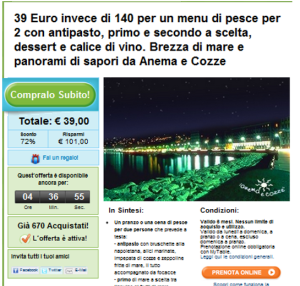
Exhibit 2 – Organization of a national entity (Italy) during the launch of the franchise in EMEA
Organization of a national entity: its most important organizational unit was the “City”, managed by the “City CEO”.
Exhibit 3 – The ARC model for Groupon before One Playbook.
Culture, Routine and Architecture reinforce each other. The only tension is in the need to build a more mature company in order to assure growth in the long term, which conflicts with the total absence of structure, the short term pressure from investors and the fragmented “City CEO” division of responsibilities.
Exhibit 4 – The ARC model for Groupon after One Playbook.
Culture, Routine and Architecture already present in the company conflict with the new structure and organization imposed by One Playbook initiative. The old entrepreneurial, competitive and innovative spirit is suppressed without introducing the expected long term sustainability.
Exhibit 5 – One of the award given to employees
Competition was constantly stimulated among employees.
Exhibit 6 – Inspirational word-cloud on a wall in the Italian office
